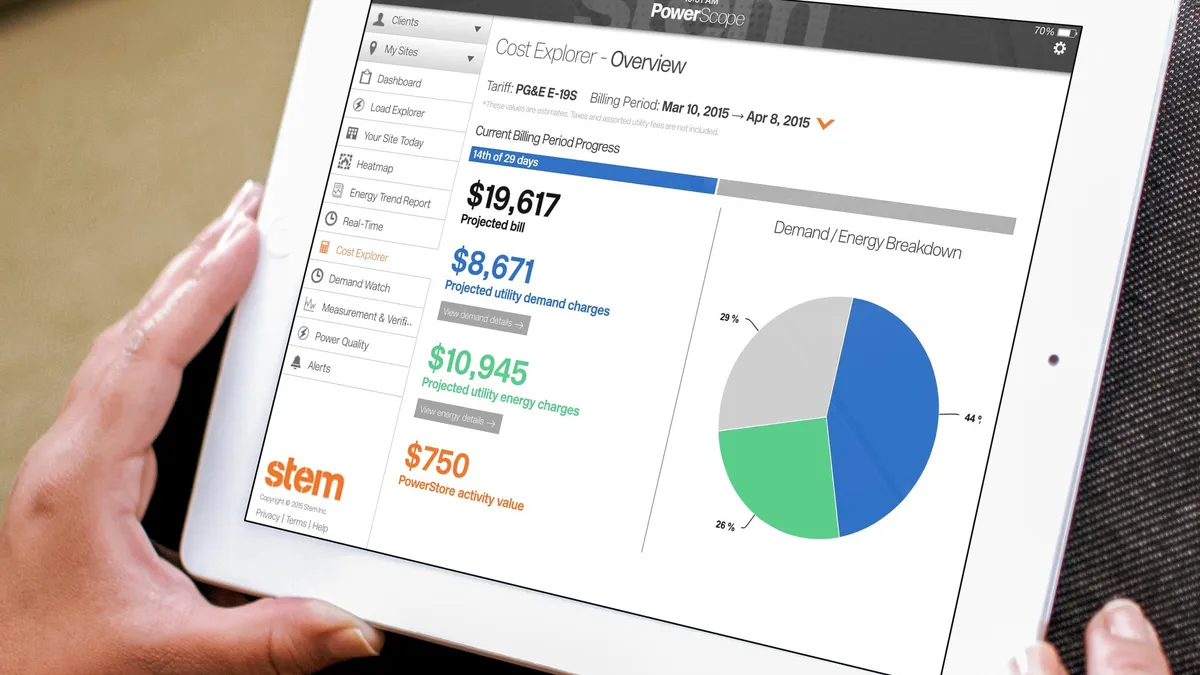Dive Brief:
- Energy storage developer Stem announced a partnership with Hawaiian Electric Co. (HECO) to install energy monitoring equipment and software in 250 public schools within the utility's service territory under its Smart Power for Schools program.
- The collaboration, which includes Hawaii Department of Education, is part of a broader intiative by Hawaiian Electric to help 400 large energy consumers to manage energy use through Stem's PowerScope software applications.
- The deal marks Stem's first venture into into offering energy management systems to consumers, a shift from its focus on energy storage systems and distributed energy management software for utilities.
Dive Insight:
Hawaiian electricity consumers face the highest power prices in the U.S., and Hawaiian Electric is helping large electricity consumers cut their usage in hopes of reducing their electricity costs and relieving peak demand on the grid.
Through the PowerScope Deployment Program, 250 public schools in the state will get access to new technology that allows them to monitor their energy usage and costs in real time.
“Stem’s software, installed with the support of Hawaiian Electric, will give us the information we need to efficiently and cost effectively add climate controls to the ultimate benefit of our students, faculty and the broader community," Dann Carlson, assistant superintendent for the Office of School Facilities and Support Services, told Pacific Business News.
Installation of the software has been completed at all public schools on Maui, Lanai, Molokai and the Big Island, the outlet reports, with Oahu installations expected to be done next month.
The deal is Stem's first foray into providing software-as-a-service to utilities and their customers for energy management. The company, which made its name for intelligent energy storage, also has an aggregated battery pilot and distribution system management project with HECO.
Third-party partnerships like the one with Stem are sure to be critical for Hawaiian Electric as it strives to meet the state's 100% renewable energy mandate by 2045. The utility's Power Supply Improvement Plan, currently under scrutiny by regulators, envisions significant roles for efficiency and distributed solar in that transition.













